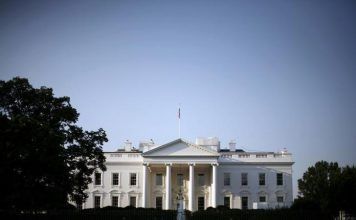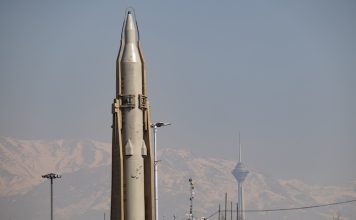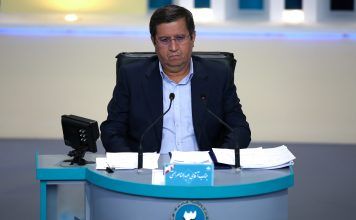By Kayhan Life Staff
Air pollution has caused the deaths of thousands of Iranians since March 2023, Mehdi Pirhadi, the Chair of the Health, Environment and Urban Services Commission of Tehran City Council, said recently.
Mr. Pirhadi made the comments at the 204th meeting of the Tehran City Council on Dec. 31.
“Air pollution caused the deaths of more than 27,000 people living in the country, including 6,398 residents of the capital, Tehran, last year,” the semi-official Tasnim news agency quoted Pirhadi as saying. “At the current rate, the number of people dying from air pollution will exceed those martyred in the eight-year Sacred Defense,” a reference to the 1980-88 Iran-Iraq War.
Citing a recent letter from the Iranian Oil Ministry, Pirhadi explained that “fuel standardization” had been postponed until 2028, which could have “several consequences.”
In an interview with the Tehran-based Rokna news agency on Feb. 20, Dr. Mahmoud Jamsaz, an economist, noted that the number of deaths caused by air pollution or road accidents in Iran exceeded fatalities from earthquakes in Turkey and Syria in February 2023.
“According to some reports, air pollution causes the death of 20,000 people in major cities every year,” Dr. Jamsaz noted. “If we combine this figure with the 27,000 who die in road accidents — caused undoubtedly by expensive yet sub-standard domestic cars — the number exceeds those who lost their lives in Turkey-Syria earthquakes.”
Some 40,000 Iranians Die Prematurely of Air Pollution Every Year
Dr. Jamsaz noted that funds allocated to the environment and clean air projects were cut by half in the government’s 2023-24 budget.
“Not only will the 2023-24 budget not solve the social and economic problems, it will pose a major challenge to the government by inflating tax revenues and resources such as oil, and will increase inflation instead,” Dr. Jamsaz warned. “It seems that officials do not understand the depth of this calamity and cannot see the telltale signs of the economic meltdown. Otherwise, they would have drafted the 2023-24 budget differently.”
In comments reported by the Tehran-based Sanat-e Jahan news online on Dec. 27, Bahram Eynollahi, Iranian Minister of Health and Medical Education, said: “According to the data, 27,000 people in the country, including 7,000 in the capital Tehran, have died because of air pollution.”
“This is only an estimate, and we cannot say that 100 percent of the deaths were caused by air pollution,” he added.
Maysam Moazi, Deputy Clinical Director of the Ahvaz Jundishapur University of Medical Sciences, recently noted
: “Hospitals have treated 132,000 people for air pollution in the past nine months in [the southwestern province of] Khuzestan.”
“Ischemia [reduced or restricted blood flow,] brain stroke, chronic obstructive pulmonary disease (COPD), lung cancer, increased asthmatic attacks, chronic bronchitis, dementia, Alzheimer’s, and allergic rhinitis are the most common ailments caused by air pollution,” Mr. Moaz said.
In an interview with the Iranian Students News Agency (ISNA) on Dec. 30, Dariush Golalizadeh, the director of the Department of Environment’s National Center for Meteorology and Climate Change, noted that incineration was the common mode of waste treatment around major cities, especially Tehran, and warned that “incineration is the major contributor to air pollution in major cities.”
“Incineration produces several gases that increase air pollution,” Mr. Golalizadeh said.
Air pollution poses a significant health issue in industrial regions.
People of Ardakan, in the central province of Yazd, held a public protest recently, criticizing the government’s failure to tackle air pollution in their city.
“A protest by Ardakan residents in Yazd over authorities’ unwillingness to tackle air pollution,” said a tweet by Kayhan London on Dec. 27.
The tweet included footage of protesters shouting, “Clean air is our inalienable right.”
High levels of air pollution forced authorities to close schools and government offices in Mashhad, the capital of the northeastern province of Khorasan Razavi.
In an interview with the Islamic Republic News Agency (IRNA) on Dec. 23, Mehdi Allahpour, the director of the Khorasan Department of Environment, warned that air pollution had reached a critical level in the capital Mashhad, making it “dangerous for residents to breathe the air.”
Gas shortages have forced many power plants in Iran to burn fuel oil, which produces higher carbon dioxide emissions than natural gas, raising air pollution. Using fuel oil in power plants raises the air pollution level at the start of winter every year.
Authorities insist that the high level of air pollution is not caused by burning fuel oil but by the large number of vehicles that do not meet emission standards. However, they cannot explain why air pollution rises at the start of the cold season every year.
“Our country has a better record dealing with pollutants than our neighbors,” Ali Salajegheh, the head of Iran’s Department of Environment, said recently. “However, this is not enough, and we must do more to solve people’s problems.”
“If we continue the same path, Tehran will not have the same experience, at least in the next ten years. Hopefully, we will not experience the same level of air pollution next year,” Mr. Salajegheh added.
Another tweet by Kayhan London on Dec. 18 said: “Air pollution in several provinces; 45,000 people die of air pollution yearly. Provinces of Tehran, Isfahan [center], Khuzestan, Markazi [center], Alborz [north], and East Azerbaijan [northwest] face high levels of air pollution. All schools in Isfahan and nine other cities in the province were closed today because of air pollution.”
A recent report by the Majlis (Iranian Parliament) Research Center examined contributing factors to air pollution in major cities and its financial and health impacts.
Citing data from the World Bank, the report said the annual economic cost of air pollution to Tehran residents was $2.6 billion, i.e., $300 per person per year. Given the current foreign exchange rate, the economic cost of air pollution to a family of four living in Tehran is about $1,200.
The report also highlighted the physical and psychological impacts of air pollution on the population, including anxiety and depression.
While authorities insist unregulated vehicles are the leading cause of air pollution in major cities, Mehdi Pirhadi, the Chair of the Health, Environment and Urban Services Commission of Tehran City Council, recently exposed 14 power plants that used fuel oil last year instead of natural gas.
According to Yusef Yusefi, the director of the Department of Environment for the central province of Markazi, Shazand Thermal Power Plant has been using fuel oil since Dec. 11.
“The power plant currently uses 4 million liters of fuel oil daily,” Yusefi said.













